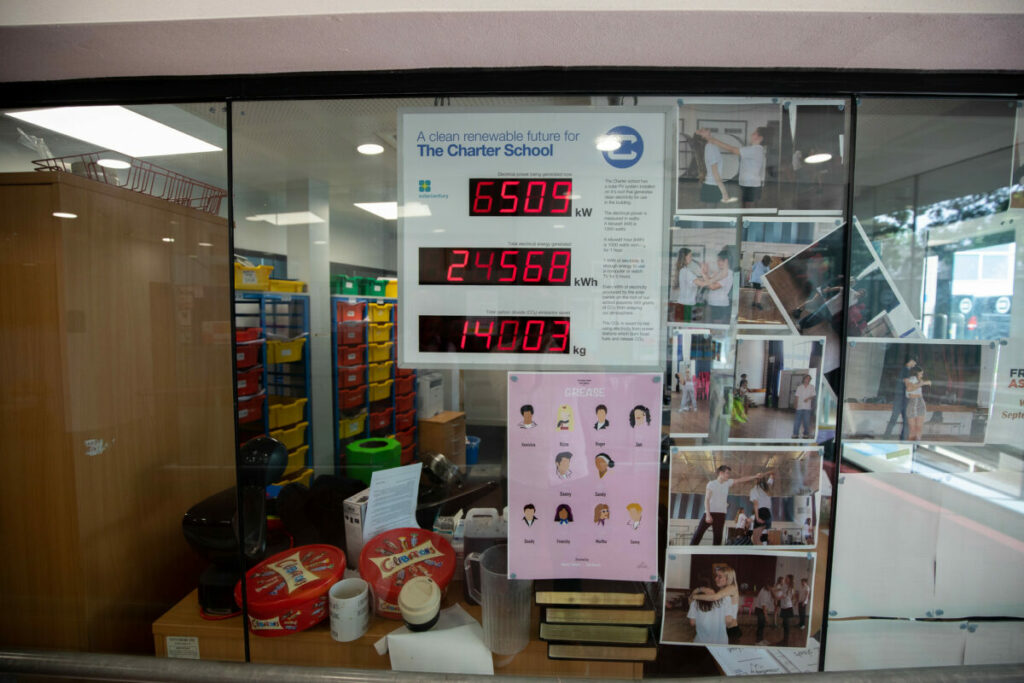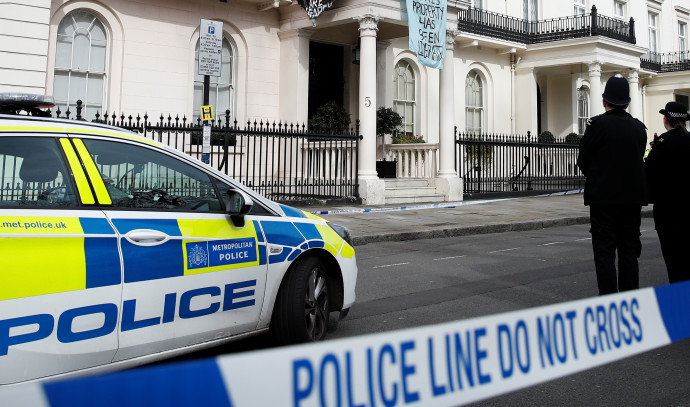In the latest instalment of our series on community energy in the UK, we look at the work of Community Energy London and one of their member groups, SE24, who are working hard to decarbonise the capital’s electricity supply.
Last week, a debate was held in parliament brought by Conservative MPs, largely from Lincolnshire, who are dealing with constituents’ complaints about the big increase in solar deployment in their area.
These MPs complained that solar developers were targeting their areas with a ‘plague’ of solar farms, and all were in agreement that solar should be developed on brownfield, industrial and rooftop sites in preference to agricultural land. However, many brownfield sites are in upland areas far from grid access. Urban rooftops would seem to provide the ideal location for more solar.
Community energy groups say they can help provide more solar capacity on domestic and commercial rooftops – exactly where both the government and opposition say they want to see it – but need more government support.
Community Energy London (CEL) supports community energy projects across the capital and has 27 affiliate member groups who have developed projects on schools, colleges, railway stations, estates, parks, churches, community centres and even golf clubs.
Current± spoke to CEL’s chair, Syed Ahmed, who said that the group started off as “a loose collective and network to provide better facilitation for organisations to share their knowledge and best practice and resources between each other.” Over time, the group “tried to synthesise the outputs of discussions that we hold on a regular basis. And we’ve been holding monthly meetings on the last Thursday of every month for close to six years now.”
“What we’re trying to do is talk to policymakers, key organisations who are interested in seeing the growth of local energy systems in London, we’re trying to advocate to them the role that community energy can help play to achieve their goals,” Ahmed tells Current±.
CEL is now looking to expand by attracting funders who want to see “large scale community-led climate action, which is highly replicable.” CEL wants to fund four or five staff positions to help accelerate the deployment of projects they hope to undertake and create tools “to help the community groups to avoid some of the burden of the bureaucracy of managing community cooperative projects.”
CEL have identified about 10,000 buildings by working with GLA data which could potentially host an average 30-40kW of solar capacity. If all this capacity were realised, it could amount to 1GW of solar.
CEL’s potential solar map of London.
There remains very low recognition amongst building operators and local authorities in London about community energy, Ahmed says. CEL is targeting around 1,000 projects by the end of the decade, which could see the current capacity of CEL member projects shoot up from around 4-5MW to 100MW.
When asked what needs to change for this rollout to happen, Ahmed points to a CEL report released in March this year that calls for more collaboration with local authorities, continued support from the London Community Energy Fund, unlocking the potential for Londoners to invest in community energy funds, more promotion of community energy and a national strategy.
“There are a number of areas that government could explore to support community energy,” says the CEL report, “from feasibility and capital funding support, to tax relief routes for investors to allowing fairer pricing for community energy power – as set out in the Local Electricity Bill.”
Current± covered the legislative and regulatory barriers, and measures to address them like the Local Electricity Bill, in our last article in this series. Ahmed says that this point was left to last, because “we see very little movement, if anything at all, on government around national policy on community energy.” Ahmet sits on the government’s community energy contact group, but “we’ve really not had significant traction there.”
Recently, 28 projects were announced as successful bidders for the 23/24 round of the Mayor’s London Community Energy Fund, including projects being coordinated by community energy groups who are members of CEL, like SE24, Power Up North London, Repowering London, and SELCE.
Ahmed says that creating more rooftop solar at a local level is going to be key to help reach net zero targets, and so the government needs to find a way to facilitate it: “If you put that distributed generation in the cities, with a still ample opportunity to connect, you reduce the pressure on delivering lots and lots of stuff in more rural areas where there are these queues. We’re not looking holistically to say, where is the energy actually being used? And what can we do there, in terms of reducing that load requirement?”
Creating more solar capacity and community microgrids in London like the ones created by Cepro for the Bristol Energy Coop will also help reduce the pressure on the grid, with less capacity needed to send electricity from offshore wind to London. It’s this holistic picture that government should consider, rather than discounting the currently small size of community energy projects.
On the ground with SE24
Alan Jones, chair of SE24 at The Charter School, North Dulwich. Image: John Lubbock
Alan Jones from SE24, one of CEL’s member groups, showed Current± around their project at The Charter School, North Dulwich to demonstrate how community groups can help decarbonise public buildings. SE24 began as an idea in 2014 among members of a South London cycling group, and with the end of feed in tariffs, the group have concentrated on larger projects which are still viable without the subsidy.
SE24 is a “community benefit society – we have seven company directors and one paid part-time employee who manages our volunteer force, so we’re 90% volunteer based,” Jones says.
“What we do is we carry out feasibility studies on community buildings in line with our company rules as an independent society, and if we find there’s a viable project on the basis of our financial modelling, we raise the capital funding through a mix of community share offer and a grant from the likes of GLA. We commission someone to design, install and maintain it,” Jones tells Current±.
The project at the Charter School is the group’s seventh and largest, at 110kWp. The installation became operational in January 2022, with the delivery managed by Joju Solar.
“The school uses about 90% of the generation and the balance is exported via a PPA to Drax,” Jones says, “From that income we pay back our investors a target 4% rate of return. The school gets low-cost energy at 14p a unit, otherwise they would be buying that at 28-30p a unit.”
SE24’s first two schemes back in 2016 were two church halls with only 10kW each. “We could just about do it economically but not now with the loss of feed in tariffs,” Jones tells Current±, highlighting the fact that lots of small-scale solar, below 50kW, could be unlocked in cities with the right government support.
Jones supports the aims of campaign group Power for People, whose Local Electricity Bill would allow local electricity producers to apply for a licence to supply power to local customers. “If you could free up the export market so a smaller site could export to the school or church down the road easily and economically, it would bring a whole load of smaller projects into the frame of viability,” Jones says.
“A big project like a solar farm isn’t going to happen inside an urban area,” he says, “but the local school or hospice or church, local people can associate with that, would be prepared to put their own money in, and there’s a lot of appetite for community energy projects. We’ve never had a problem raising funding even though we offer a relatively modest rate of return. It comes from individuals, we have 100 investors and have raised about £450k over the past few years, most of that has come from individuals.
Another aspect of community energy projects is that many have a philanthropic aspect. SE24 has a fund where they put surplus revenue to be used for tackling local fuel poverty, and work with local groups to help people who struggle to heat their homes in the winter.
Projects like SE24’s Charter School solar installation also have a curriculum aspect. Screens at the school show pupils how much energy is being generated by the solar panels, helping to teach children about how energy can be created and how it flows around the grid.

For groups like SE24, funding is key. They get some of their money from the London Community Energy Fund, and can raise some with share offers, but more funding is necessary. “It would be great if there was more central government financial grant support for project feasibility, community engagement and installation work,” Jones says.
SE24 is one of many community energy groups beavering away across the capital – CEL have a map of many of their members’ projects you can explore. Many of these groups have over a decade of experience under their belts, delivering small projects to decarbonise schools, churches and other buildings. Clearly, with the right support, they could achieve a lot more.
In the next article in this series, we will be looking at Labour’s plans for community energy, with their Local Power Plan promising £400 million a year for community energy and £600 million a year for local authorities “to build clean power in cities, towns and villages across Britain to boost national energy security and cut energy bills, as we turbocharge our mission for clean power by 2030.”
https://www.current-news.co.uk/current%C2%B1-explores-community-energy-in-the-uk-london/




